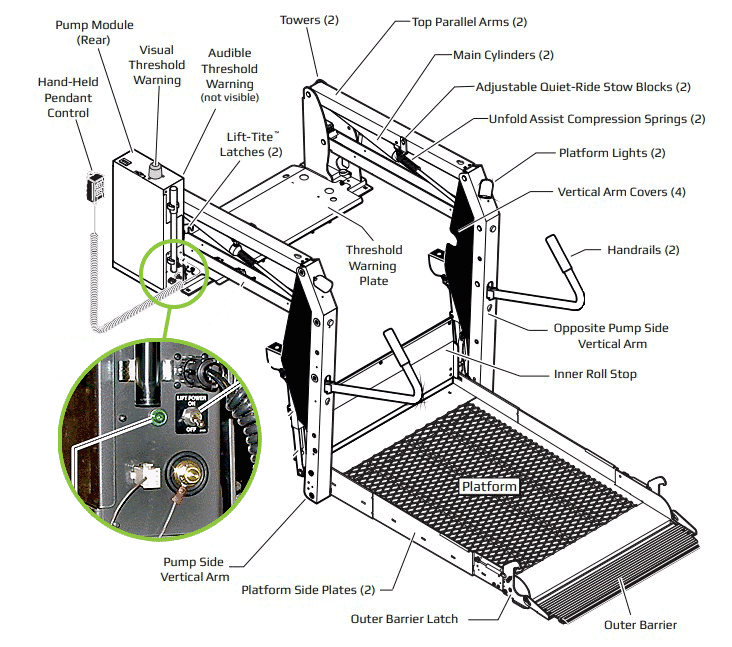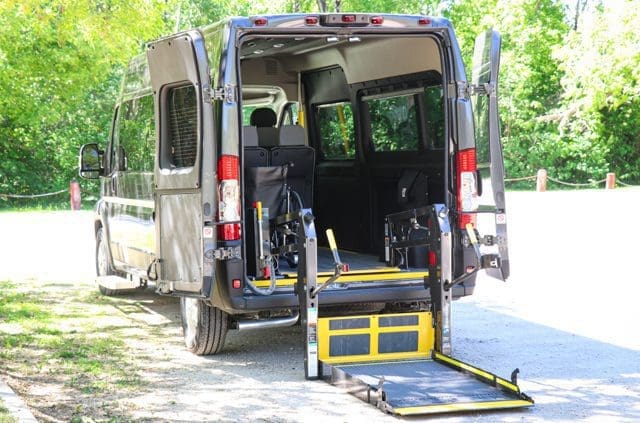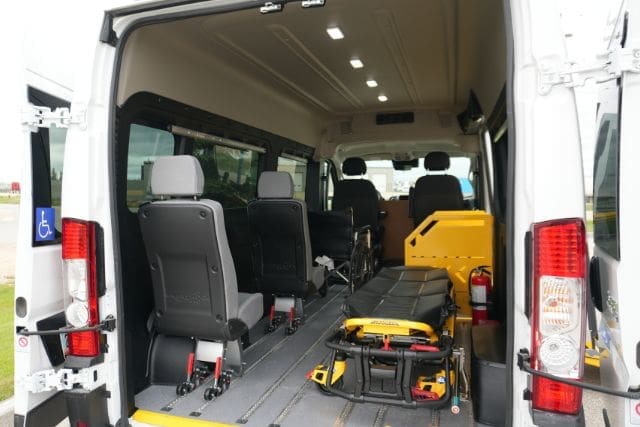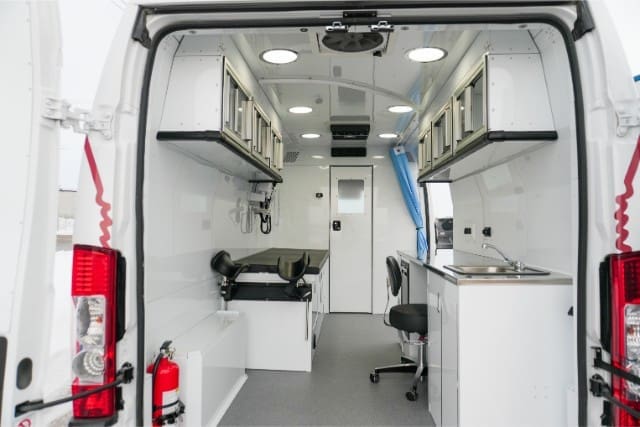Dealing with a stuck wheelchair lift is beyond frustrating. Firstly, it can prevent wheelchair users from entering and exiting the vehicle. Secondly, it can lead to delays in transportation services and impact your clients’ getting to appointments on time. Thirdly, it can potentially cause premature wear and tear on the lift system.
Our team at MoveMobility has been manufacturing wheelchair accessible vans for over 10 years. All of our vehicle modifications are certified by Transport Canada and contain the National Safety Mark as proof of that. We also have the Q-Pro Quality Certificate from STELLANTIS.
We’re serious about providing top-quality products. We’re equally as serious about providing solutions if you ever end up running into issues with the products. If you’re tired of your wheelchair lift getting stuck, this article is for you.
As you read on, you’ll learn about the most common issue that causes wheelchair lifts to get stuck. We’ll also leave you with some resources if you think it’s time to start looking for a new wheelchair van for your organization.
What is the most common reason why wheelchair lifts get stuck?
A wheelchair lift usually gets stuck because it’s not being used properly. Things like trying to lift too much weight or ignoring warnings can trigger the safety features, causing the lift to get stuck.
Wheelchair lifts are loaded with safety features. It’s normal to feel annoyed and frustrated when the lift doesn’t cooperate, but it’s important to remember that these safety measures are there to keep everyone safe. Putting safety first is the smart move, even if it slows things down a bit.
Safety first: The main goal of wheelchair lift safety features is to prevent accidents. Safety features give peace of mind to both wheelchair van operators and passengers. They also help to maintain the lift’s functionality over time.
Rollboard barriers: Picture a lift without safety features like seatbelts in a car – it would be way too risky for regular use. That’s why things like rollboard barriers are important. They stop wheelchairs from rolling off during the lift.
Emergency stop: Another important feature is the emergency stop button. This button instantly stops the lift if something unexpected happens.
What’s the solution to your wheelchair lift getting stuck?
It’s easy to get impatient with a wheelchair lift that keeps getting stuck, but don’t worry. We’ve got practical steps to help you troubleshoot and solve the problem. Let’s dive into each step to help your organization deal with this common issue.
Step 1: Check the power
Start by making sure the power switch for the lift is turned on. You’ll usually find this switch at the bottom of the pump module. It might sound simple, but it’s an important first step that you should always start with. If you’ve gone through this first step and confirmed that the power is already on, move on to the next step.
Step 2: Clear safety catch hooks

One of the main reasons why a wheelchair lift gets stuck is because the safety catch hooks are engaged incorrectly. These hooks are there to keep things safe, but using them improperly can cause problems.
Here’s what you need to know:
Locate the hooks: Look for the safety catch hooks on both sides of the lift. They’re meant to protect, but they can also cause trouble if they’re not used right.
Use them correctly: When stowing the lift, make sure not to engage these hooks. Instead, fold the lift all the way into the van without catching it on them. This simple step can prevent a lot of headaches.
If you’ve gone through step 2 and the lift is still stuck, proceed to step 3.
Step 3: Use the manual backup pump
If the hand-held pendant isn’t working and the lift won’t stow, don’t panic. You can still manually stow the lift using the backup pump. This solves the immediate problem but also resets the safety catches, helping prevent future issues.
Additional tips
Here are a few more things to keep in mind:
Regular maintenance: Schedule regular maintenance checks for your wheelchair lift. This helps catch any potential problems early on and keeps everything running smoothly.
Training: Make sure everyone who operates the lift is properly trained. Teach them the correct procedures, including how to handle safety catch hooks. This reduces the chances of errors and keeps everyone safe.
Fixing a stuck wheelchair lift is usually a straightforward process. With these simple steps, you can ensure that your wheelchair lift stays reliable and safe for everyone who uses it. If you have any questions regarding this issue, don’t hesitate to contact our van specialists for expert guidance.
Is it time for a new wheelchair van?
If you’ve tried everything to fix your current wheelchair van lift but it’s still causing more problems than it’s worth, it might be time to think about getting a new wheelchair van with a fresh lift. Additionally, investing in a new van could relieve ongoing frustrations and ensure smoother transportation for individuals with mobility needs. At MoveMobility, we make a variety of wheelchair vans to suit different needs.
Why is getting a new wheelchair van a good idea?
Reliability: A new van means new equipment, including a reliable lift. No more dealing with constant breakdowns or issues.
Accessibility: Our vans are designed to make sure everyone can ride comfortably. With features like spacious interiors and easy-to-use lifts, your passengers will feel comfortable and respected.
Inclusivity: Getting a new van shows that you’re serious about making your program accessible to everyone. It’s a way to make sure nobody gets left behind.
Peace of mind: With a new wheelchair van from MoveMobility, you can relax knowing your organization can provide reliable transportation that meets everyone’s needs.
If you’re interested in this route, read through our articles on how to choose a wheelchair van and how long it takes to get one for more information on that.
You should also read our article on full-size wheelchair vans to help you figure out which one is right for you.
Your path forward with MoveMobility

You came to this article trying to figure out why your wheelchair lift is stuck. You learned one of the most common causes of that issue, along with some solutions to resolve it.
When your organization consistently encounters issues with its wheelchair van, upgrading to a new one can prove to be the most effective solution. Moreover, investing in a new van ensures improved reliability and functionality, addressing any previous challenges faced. Cost constraints are often what keep people from thinking about investing in a newer vehicle. But in the long term, you could end up dealing with even more costs due to liability concerns and further repairs.
With over a decade of experience in the industry and a commitment to eliminating transportation barriers across Canada, our team at MoveMobility is ready to assist you.
Click the button at the end of this article to reach out to our mobility specialists to explore how a new wheelchair van can transform your transportation operations for the better.
Read our article on wheelchair van maintenance if you have any other lingering questions about that.
Lastly, if you’re considering a new wheelchair van, take a look at this article on what they cost.








